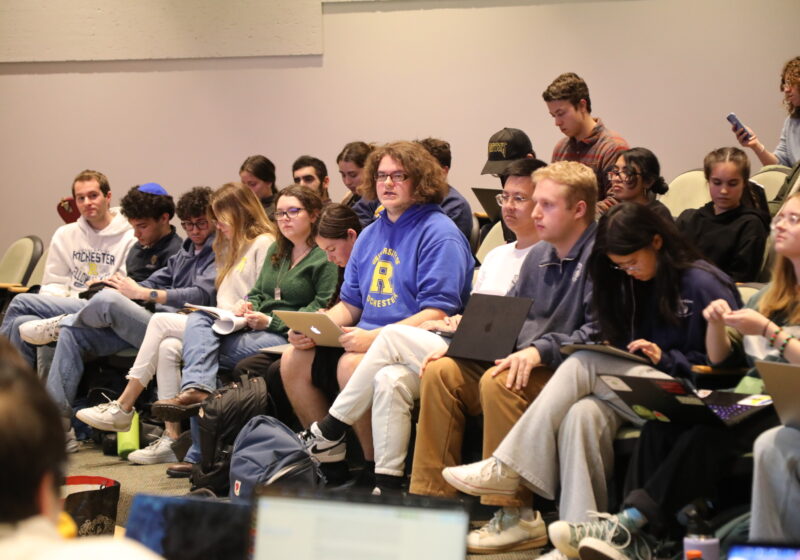New York City. Center of the Contemporary art scene – especially for the weekend of March 11 to 13. Opening March 11 at 12 p.m., the Chelsea Piers 90 and 92 held “The Armory Show: The International Fair of New Art.” One hundred and sixty-two galleries from all over the world – from Milan to Paris to Tel Aviv – brought their finest works to the Chelsea Piers in NYC to showcase numerous relatively new and unknown artists. These galleries all took a stab at showing what is hip in the contemporary art world.
From the outside, Piers 90, and 92 looked dark and scummy, like old warehouses. However, on the inside, each had been turned into a stunning gallery adorned with red carpet, many temporary walls and large windows with a view of the Hudson River.
By the end of my two-hour walk through Pier 92, all of the art had started to look alike. Many of the galleries showed photographic images and digital prints, which became increasingly dull as I progressed through the pier. However, after entering Pier 90 I felt refreshed. Pier 90 seemed much better, incorporating brighter colors, more variation and glitter in the art. My first impression of Pier 90 greatly differed from the artwork in the previous pier, as I was immediately confronted with a large colorful sculpture that took the shape of a wall upon my entrance.
Many of the galleries shared common features, such as bright colors, bright lights and shiny objects, which most attracted me to the works. Light boxes were prevalent, and the bigger they were, the better. They offered something incredibly enticing – the light boxes were a variation on the common photograph mounted on a wall.
Each gallery had a partitioned area where artists could display work in any way that they wanted. Some galleries only hung prints and paintings, some had video projections, while others fully transformed the space, creating a feeling of separation from the rest of the pier by adorning the space with rugs and wallpaper.
One such gallery that really stood out was Peres Projects from Los Angeles, which succeeded in making their space especially different from the rest of the gallery spaces. One of their three walls was covered in a very bright, somewhat retro wallpaper-like design which was the backdrop to a television screen playing a video by Assume Vivid Astro Focus. There was a singing male on the video whose voice enticed people to walk into the space, while the digitally created background changed from one second to the next. He could be heard singing “Just like a movie star” from across the pier.
While I found a lot of artwork that I enjoyed, there were others that were just uninteresting. For example, the galleries that showed small photographs did not captivate my interest, while photographs on a very large scale attracted me. Also, the traditional realistic painting was not appealing at all, especially in contrast to brightly colored, funky works, specifically those of mixed media.
Through my exposure to art as a studio arts major, I have realized the dominance of controversiality in contemporary art. That’s why this show, which was marketed as one of the largest and most compact contemporary art collections in the country, left me a bit puzzled. Why was there nothing political? Nothing gave me the urge to look away or to question the artist’s intent or thought process. All the art in this show, or at least almost all of it, was very transparent. Was this a fair representation of the galleries’ collections? Or, did they just bring their most marketable work in hopes of attracting more art dealers and collectors?
Wolfson can be reached at bwolfson@campustimes.org.



